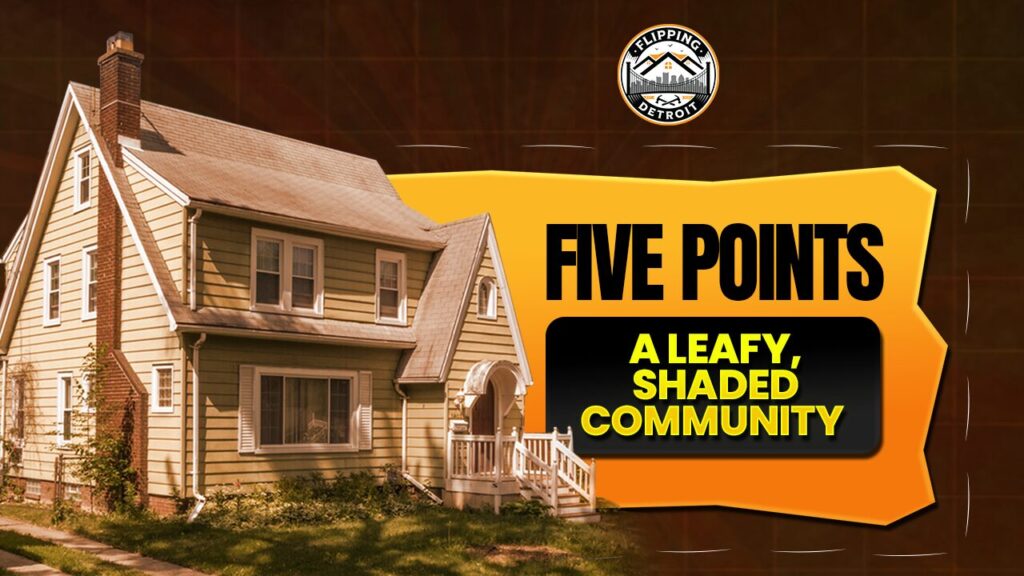
Five Points is a Detroit neighborhood situated at the edge of the city’s northwest border, where Seven Mile, Grand River, and Five Points Street intersect.
It gets its name from the unique geometry of that intersection, which has a long-standing reputation as a meeting place where culture, history, and multiple generations converge in an area that somehow manages to feel both suburban and big city at the same time.
Birth of a Cultural Hub
In the mid-twentieth century, Five Points was known as a place that welcomed Detroit’s upwardly mobile Black families with open arms, leading many of them to flee the more uptight east-side neighborhoods to settle there.
However, if you were to rewind further back, the area now known as Five Points was nothing more than old Redford Township farmland – a rural outpost that existed on the outermost edge of the Motor City as it was booming.
It wasn’t until the city of Detroit finally annexed Redford in 1926 that the area became known as Five Points, a move that brought everything from streetlights to paved roads – not to mention brand new homes for the employees at Ford’s Rouge Plant and other busy factories of the day.
These were modest, sturdy, eye-catching brick colonials and bungalows that can still be seen lining the shaded streets of Five Points today – homes that tell the story of ambition, growth, and self-sufficiency even in the face of struggle.
A Place to Belong
Five Points is one of those rare pockets of Detroit that still feel suburban and well-maintained despite being within arm’s reach from the city’s industrial districts.
Even as Detroit’s population started declining in the 1950s and 1960s, Five Points held on to its unique identity, with churches, local clubs, and small businesses along Seven Mile and Grand River helping anchor its reputation as a place of pride, ownership, and connection.
With curving roads contrasting with the tighter layout of the blocks closer to downtown, residents often describe Five Points as the kind of place where you can sit out on your porch in the summer, converse with neighbors, have weekend barbecues, and never feel even remotely unsafe.
That said, it’s still unmistakably Detroit.
The street art, the corner stores, the combination of old-school charm and new-gen hustle – it’s all easy to come by here.
Community Life and Challenges
Like most of Detroit’s District One neighborhoods, Five Points has faced its fair share of struggles over the years, most of which stem from the 2008 housing crash and the many homes it left behind.
This was a traumatic time that saw many lifelong Five Points residents losing everything they had to foreclosure and mass migration.
That said, those who hunkered down and stayed through the storm fought long and hard to preserve the original spirit of the neighborhood, implementing everything from community patrols to beautification projects to prevent the area from slipping into neglect.
Today, a number of grassroots groups continue to fight that battle, focusing the bulk of their attention on reclaiming abandoned lots and turning them into lush community gardens and recreation spots.
Not only that, but Five Points schools have also seen a comeback in recent years thanks to renewed support from local parents, alumni networks, and volunteer efforts from devoted residents.
Churches also remain a solid community anchor.
Look no further than Greater Grace Temple, which provides not only spiritual guidance but also mentorship, outreach, and job resources.
The Path Forward
The future of Five Points is looking bright, but it all depends on the city’s ability to balance out its reinvestment efforts with working-class authenticity.
As for investors and first-time home buyers, the area definitely serves as an appealing option for those seeking out the best of both worlds: city living with a down-to-earth neighborhood feel.
Its close proximity to major thoroughfares and its stable housing stock are also a huge plus.
In short, Five Points is more than just an iconic intersection.
It’s Detroit’s symbol of endurance and integration – a place where stories intersect, streets converge, and residents still hold the line between past and future.


 Please check your email for your login details.
Please check your email for your login details.